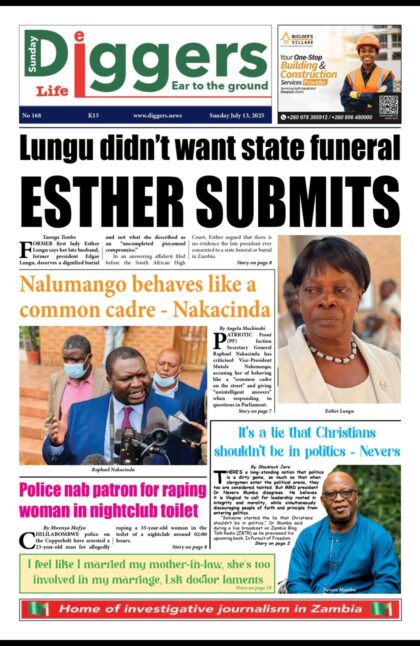The kwacha is expected to remain under pressure, depreciating against major currency convertibles, to end the mid-way point of this month at around K14.40 per dollar owing to a resumption in high demand for the greenback versus little supply.
According to market players, the kwacha depreciated to hit the K14 per dollar psychological barrier three times last year, closing 2019 at the same position it was in November and last May.
The local currency maintained its weak position by Wednesday, continuing its depreciating trend to now average K14.36 and K14.41, according to the Bank of Zambia (BoZ), from an average K13.70 per dollar three weeks ago.
According to FNB Zambia Limited, the kwacha is likely to continue weakening in view of increasing demand for the greenback compared to limited supply.
“Demand for US dollars persists against reducing supply pressure, which has been to the upside. The local unit is likely to remain under mild pressure for the rest of the week. We expect USD/ZMW to close the week above K14.40,” FNB stated in a daily market update released, Wednesday.
It, however, forecast that the local unit would recover during the medium-term on the back of improved copper prices on the international market, which have remained bullish at over US $6,200 per tonne since the turn of the New Year.
“In the medium-term, however, the kwacha should get a boost from improved copper prices. Some mine taxes are a function of the price of copper — as the price goes up, so do tax payments,” stated FNB.
“Meanwhile, liquidity in the cash market has continued to exit through the settlement of taxes. Liquidity was at K0.8bn (K800 million) at the end of yesterday (Tuesday). With banks projected to have limited liquidity, their participation at the auction may be limited. The auction will, thus, not record a strong performance.”
And Cavmont Bank equally projected that the local currency would receive support from the diminishing liquidity on the local financial market.
“With the withdrawn kwacha liquidity in the market, we expect the local unit to receive support in the near-term,” stated Cavmont in its market report released, Wednesday.
During 2019, the kwacha depreciated to an all-time high of an average K15.31 per dollar in early December, losing value of around 8.56 per cent in a space of just three weeks from mid-November.
The kwacha’s depreciation to historic levels came in the wake of expensive electricity and fertilizer imports into the country last November.



















